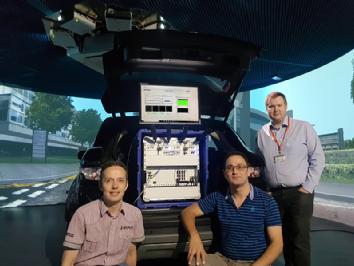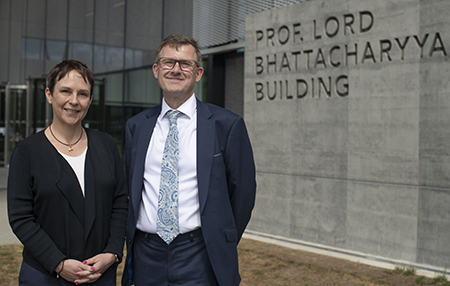WMG News
Enhancing the quality of future mobility services through leading 5G research
- Self-driving vehicles can use 5G for remote driving and enhanced vehicular perception through the sharing of sensor data with other vehicles and the roadside infrastructure
- As 5G becomes ever more popular, researchers at WMG, University of Warwick, install Europe’s first over-the-air 5G New Radio test user equipment.
- The equipment will be used in connected autonomous vehicles on the Midlands Future Mobility testbed.
A future of self-driving vehicles enabled by the latest high-speed 5G mobile technology is to be investigated by the University of Warwick thanks to the installation of state of the art test equipment.
The first over-the-air 5G New Radio standard-compliant test user equipment (UE) in Europe has been homed at WMG, University of Warwick. The equipment will be put in Connected Autonomous Vehicles (CAVs) being tested on the Midlands Future Mobility (MFM) testbed on the University campus, to share sensor data with other vehicles and the roadside infrastructure.
With the accelerating deployment of 5G functions on existing wireless telecommunication networks, the time is right to test the full potential of 5G independently. As the lead of the MFM testbed for CAVs, WMG, at the University of Warwick, has set enabling and performance testing of high throughput, low latency CAV use cases as one of their key research focusses.
Its use cases include remote driving and enhanced vehicular perception through the sharing of sensor data with other vehicles and the roadside infrastructure. Moreover, WMG also aims to enhance the quality of future mobility services by exploring how to seamlessly stream infotainment content for CAV passengers over a 5G link.
In this role, WMG have just installed Europe’s first 5G New Radio test UE that is fully compliant with Release 15 of the 5G technology standard developed by the 3GPP. It can emulate full UE operation and test real-time performance of 5G wireless connections to external base stations.
The mobile UE can be placed inside MFM vehicles on its 5G campus testbed, and payload data can be sent through 5G infrastructure into its further 5G network.
WMG and MFM are already engaged with a variety of industrial partners regarding connectivity, technology verification and validation, and the understanding and optimisation of user interaction with driverless technology. This new installation will further support their leading role in CAV development and testing, and help them accelerate the related product and service design and deployment.
Besides providing 5G automotive communication, this technology is, among others, also transferable to the manufacturing sector and supports Industry 4.0 use cases in which massive connectivity, high throughput and low latency mobile communication requirements exist as well.
A team of researchers led by Dr Matthew Higgins, Associate Professor at WMG, is now integrating this new technology component from NI into their current projects.
WMG’s Dr Matthew Higgins said:
“Crucial to our research strategy is the ability to understand and demonstrate the potential of 5G communications systems to our project partners early in their product development cycle. NI’s latest 5G test solution enables us to conduct standard-compliant, real-time 5G link performance tests inside both a controlled lab environment as well as outdoors in campus trials before commercial hardware is available.”
Dr Erik Kampert, HVM Catapult Senior Research Fellow added that:
“Being experienced users of state-of-the-art 5G communications equipment, this unique UE solution from NI facilitates us to expand our capabilities for CR&D work and collaborative project with CAV partners.”
James Kimery, Director of Wireless Research and SDR marketing at NI said:
“5G promises to not only revolutionize the wireless industry but also pervade and expand into other areas. For 5G application research, standard compliant technologies and solutions such as the NI Test UE are critically important to furthering this research and spurring innovation. NI is very excited to work with researchers at WMG and MFM and applaud their vision of evolving 5G into automotive, manufacturing, and beyond.”
The British Science Festival is coming to Coventry and Warwickshire
One of Europe’s largest science festivals is coming to town between September 10th and 13th.
With a schedule comprising more than 100 free events, activities and performances, the British Science Festival will “transform the region into a celebration of science and culture”.
The festival will feature talks from a selection of WMG experts, including Erik Kampert - Senior Research Fellow, Dave Greenwood – Professor of Advanced Propulsion Systems, Mark Williams – Professor of Metrology and Alan Chalmers – Professor of Visualisation.
Held in partnership with the University of Warwick, the programme highlights local strength in digital technologies, smart cities and the future of energy and healthcare.
There’s a special emphasis on the fun, thought-provoking, and societal aspects of science to show how it’s not just confined to laboratories, but something that’s all around us.
Plus, there will be a special filming of The Sky at Night: Question Time with Dr Maggie Aderin-Pocock and Professor Chris Lintott.
Other highlights include interactive experiences like a live 3-D psychedelic show and festival carpool in a driverless pod, discussions on how ‘gaming becomes gambling’, how AI could revolutionise cancer treatment, and how to tackle food poverty with food writer Jack Monroe.
Not to mention, a mud kitchen and tea-blending for adults and a takeover of Coventry’s FarGo Village with comedy, artistic workshops and an escape room.
Book here.
WMG showcased as part of Australian ministerial visit
As part of an Australian delegation’s visit to the UK, Victorian Minister for Roads, Road Safety and Transport Accident Commission (TAC), The Hon Jaala Pulford MP, was welcomed to WMG, University of Warwick on Monday 29th July.
The delegation, including members of the Transport Accident Commission and the Victoria Police, are considering types of technology and innovation to pursue across vehicle, enforcement and infrastructure in the development of its Towards Zero post 2020 strategy.
Visitors explored international best practice and innovation in the context of the project, with the initiative aiming to reduce serious road trauma through innovative transport systems.
Greeted by Professor David Mullins, Interim Head of Department at WMG, the Minister took a tour around WMG’s world-class facilities, including its International Manufacturing Centre (IMC), Energy Innovation Centre (EIC) and newly-opened National Automotive Innovation Centre (NAIC).
Appointed Minister for Roads, Road Safety and Transport Accident Commission in December 2018, The Hon Jaala Pulford MP is now looking at how different jurisdictions are meeting the road safety leadership challenge and, commenting on today’s visit to WMG, she said:
“We’ve had an invaluable visit to WMG today. There’s a great energy to the partnership between industry and research as we all strive to gain the benefits of connection and automation to safety and congestion management. WMG has given us much to reflect on.”
The Victorian Towards Zero 2016 - 2020 Strategy and Action Plan maps out a plan for Victorian road safety partners to work towards a 20% reduction in deaths and 15% reduction in serious injuries in five years. Professor David Mullins, Interim Head of Department at WMG added:
“It was a pleasure to welcome the Victorian Minister and her delegation to WMG. This provided an opportunity for us to showcase the pioneering work we are doing. We were able to highlight our cutting-edge technology and the infrastructure we’ve built here to successfully run our portfolio of transport-based projects and initiatives.
“This visit was about gathering intelligence to explore innovative technologies and strategies that can reduce the risk of serious road trauma. Being involved in such an important activity and sharing WMG’s expertise and facilities with the world is extremely important.”
Do passengers prefer autonomous vehicles driven like machines or like humans?– research finds that “peeking round” corners provides answers
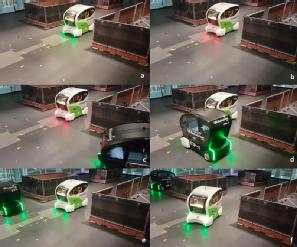 Passenger and pedestrian confidence and acceptance will be key to the future and development of autonomous vehicles so researchers at WMG at the University of Warwick have just conducted and reported an experiment to see which autonomous vehicles driving style engendered the highest levels of confidence among autonomous vehicles passengers – driving with full machine efficiency, or driving in a way that emulates average human driving. The surprising result was that neither was optimal but that a blend of both might be best.
Passenger and pedestrian confidence and acceptance will be key to the future and development of autonomous vehicles so researchers at WMG at the University of Warwick have just conducted and reported an experiment to see which autonomous vehicles driving style engendered the highest levels of confidence among autonomous vehicles passengers – driving with full machine efficiency, or driving in a way that emulates average human driving. The surprising result was that neither was optimal but that a blend of both might be best.
The researchers took 43 volunteers into a large warehouse designed to resemble a pedestrianised area in a town centre with a series of routes that included a range of junctions. Half were given 4 journeys around the route in an autonomous vehicle driving with full machine efficiency using all its capabilities to drive in as safe and efficient manner as possible while the others were given 4 journeys around the route in autonomous vehicles that tried to closely emulate average human driving patterns. They then scored the level of trust in the autonomous vehicles. The result has have just been published in the journal Information (2019, 10, 219; doi:10.3390/info10060219).
The overall result was that there was only a marginal difference in trust between the two driving methods. The efficient machine method was slightly favoured but even that small gap between the two driving styles narrowed over the four runs. What was noticeable for both the “machine” and “human“ driving styles is that confidence in both grew with each new round suggesting that simple familiarity and growing accustomed to the experience will be one of the most effective ways of quickly building trust and acceptance of autonomous vehicles once their use becomes more widespread.
|
Mean scores of trust |
Human |
Machine |
|
First Run |
59.30 |
63.19 |
|
Second Run |
59.55 |
66.33 |
|
Third Run |
65.85 |
68.29 |
|
Fourth Run |
67.20 |
69.38 |
Dr Luis Oliveira from WMG at the University of Warwick and the lead author on the paper said:
“The overall trust in both driving methods grew with every run. In the machine-like driving style this was steady upwards curve throughout the four journeys but in human-like behaviour there was a particularly steep change upwards in the scores between runs 2 and 3. The passengers in the experiment also acknowledged that future generations may be more comfortable with AVs and its features, as they learn to live with the new technology.”
The researchers also asked the participants to give some narrative about their experience and this showed that there were advantages on both modes of driving that may therefore need to be blended together in any future final package. The researchers’ literature review and warehouse experiment made clear that there re were two particularly clear lessons to be learned:
Smooth speed change – Past studies had already shown that Human drivers’ tendency is to break most at the start of any manoeuvre that requires deceleration whilst the totally automated driving programmes applied speed changes more gradually and efficiently. Human passengers preferred the comfort of the smoother changes of acceleration and deceleration provided by the machine driving methods.
Sharp turns - A common complaint was a feeling that the vehicles were performing uncomfortable and worrying sharp turns. This feeling was actually expressed by both those in the machine and Human style driving set ups but it was much more noticeable in the machine-like driving style condition. One typical negative comment was “what you’d expect from a driver is a bit of a gradual turn….there were moments where it was accelerating around corners, I think it catches you unaware.”
WMG’s Dr Luis Oliveira said:
“This shows that the challenge is that the speed and trajectory of autonomous vehicles should be finely controlled, but at the same time the vehicle should be assertive to provide the benefits of automated driving."
However it was the AV’s behaviours at junctions in the WMG University of Warwick warehouse test that produced the most diverse and surprising reactions.
The machine driven AVs were left to make use of all of their sensors and ability to communicate with vehicles that may out of line of sight to decide whether to enter a junction. If their sensors said it was safe and their communications with other vehicles indicated no approaching threats they would simply enter the junction without stopping. If however they detected a vehicle that they believed should have right of way – even if it was not yet visible to the human passenger they would stop and let that vehicle pass. In contrast The AV’s emulating human driving would always stop at a junction and would even edge into the junction as if the peek at what the oncoming traffic might be.
The reactions to those two different approaches were very varied and surprising.
Some liked the human approach with one saying that the AV was “…probably trying to inspire confidence in the passenger, I’m guessing, in terms of like the way it behaved, kind of quite similar to a human, it’s only ever going to inspire confidence I think it’s because that’s what we’re used to”.
Some also liked the machine driving approach of stopping at junctions even though there was no visible issue but because it was in communication with another out of sight vehicle that it perceived had right of way. One passage said: “it stopped at a junction, because I assume it knew that something was coming, as opposed to it reacting to seeing something coming”.
Equally there was dislike for both the human and machine driving methods of handling a junction.
Some perceived problems with the machine approach of just entering the junction if it believed it to be clear to do so with one saying that they were concerned about vulnerable road users. “..such as pedestrians or cyclists that could have been there that don’t communicate with the pod. That may be a safer way of doing it rather than flying around the corner”.
However others were greatly surprised at the “human” driving method AV stopping at every junction as they saw it not just as waste of the machines capabilities to scan and communicate ahead to understand traffic. They were frustrated that the vehicle was not “more assertive” One passenger saying “sometimes I didn’t expect it to stop, because I thought the other pod was a bit further away but then it did, so I guess it’s cautious…if I was driving I’d probably have gone”. Another passenger said “If I was in an autonomous pod with sensors giving a 360-degree view at all times, I’d expect the vehicle to instantaneously know whether it was safe or not, and not need to edge out”.
A further passenger who tested the human-like version, commented that a machine driving like a human and trying to look around the corners seemed ironically unnatural saying: “I think it was a bit unexpected because my expectation with the pods is that that there would be some un-naturalism to it rather than a human driver”.
Despite this seeming mass of contradictions in views about how AVs should handle junctions the research team do think there are valuable lessons to be learned even here. In particular:
- There is clearly a need to give the general public the details of the driving systems, for example, the recent technological features such as vehicle to vehicle communication
- For passengers in a vehicle consideration should be given to having a display and/or audio information that shares some of the information the vehicle is using so users can understand that the system is aware of hazards beyond the field of view.
- There may be some merit in presenting the full benefits of the most efficient methods of machine based driving progressively when mass use is first introduced, so that passengers can build confidence over time
Note for editors: The full list of authors on the paper is Luis Oliveira (corresponding authour), Christopher G. Burns, and Professor Stewart Birrell (all of WMG at the University of Warwick at time of publication of the journal article) and Karl Proctor of Jaguar Land Rover.
For further details please contact:
Luke Walton, International Press Manager
University of Warwick
L.Walton.1@warwick.ac.uk
+44 (0) 7823 362 150
Or
Peter Dunn, Director of Press and Media Relations
University of Warwick
Tel office: 024 76523708 UK +44 (0)24 76523708 International
Mobile/Cell: 07767 655860 UK +44 (0)7767 655860 International
Email p.j.dunn@warwick.ac.uk
Or
Lisa Harding, Head of Marketing and Communications, WMG,
University of Warwick Tel: 024 76 524721 or 07824 540845
email L.Barwick@warwick.ac.uk
WMG researcher takes research to Parliament
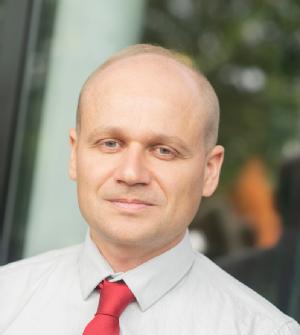 WMG Research Fellow, Sid-Ali Amamra, has been selected to present his work at the prestigious STEM for BRITAIN event on Wednesday 13th March.
WMG Research Fellow, Sid-Ali Amamra, has been selected to present his work at the prestigious STEM for BRITAIN event on Wednesday 13th March.
The event takes place at Westminster with around 100 MPs in attendance to hear more about the current science, engineering and mathematics research by early-stage and early-career researchers in the UK.
Sid-Ali works within WMG’s Intelligent Vehicles research team focusing on the advanced energy management systems for electrical networks and power systems integrating plug-in electric vehicle with Li-ion battery technologies.
Sid-Ali’s poster on research about the Vehicle-To-Grid (V2G) technology supervision using internet of things (IoT) will be judged against dozens of other scientists’ research in the only national competition of its kind. He was shortlisted from hundreds of applicants to appear in Parliament.
Sid-Ali explains: “I feel happy to present WMG at this event. It is a fantastic opportunity for me to communicate my research to an interesting audience and to present the high impact of my project for helping government to reach the net-zero emissions UK’s target in near future.
“It gives me a chance to go to Parliament and be in the company of MPs, policymakers and key figures, as well as others researchers from around the country. At STEM for BRITAIN, I want to explain the promising results of using V2G technology to help achieve the UK’s zero emission target.”
Stephen Metcalfe MP, Chairman of the Parliamentary and Scientific Committee, said:
“This annual competition is an important date in the parliamentary calendar because it gives MPs an opportunity to speak to a wide range of the country’s best young researchers.
“These early career engineers, mathematicians and scientists are the architects of our future and STEM for BRITAIN is politicians’ best opportunity to meet them and understand their work.”
Sid-Ali’s research has been entered into the engineering session of the competition, which will end in a gold, silver and bronze prize-giving ceremony.
Judged by leading academics, the gold medalist receives £2,000, while silver and bronze receive £1,250 and £750 respectively.
The Parliamentary and Scientific Committee runs the event in collaboration with the Royal Academy of Engineering, the Royal Society of Chemistry, the Institute of Physics, the Royal Society of Biology, The Physiological Society and the Council for the Mathematical Sciences, with financial support from the Clay Mathematics Institute, United Kingdom Research and Innovation, WMG, Society of Chemical Industry, the Nutrition Society, Institute of Biomedical Science, the Heilbronn Institute for Mathematical Research and the Comino Foundation.
WMG is proud to be sponsoring the Engineering section for the third year.
Find out more about STEM for Britain here.
Autonomous Vehicle's testing simulator wins gold
R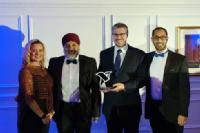 esearchers from WMG at the University of Warwick have won gold at National Instruments Engineering Impact Awards 2018 for the WMG 3xD Simulator project. WMG’s 3xD Simulator is a world’s first-of-its-kind facility that enables autonomous vehicles to drive around in a virtual environment– accelerating testing before they are road ready.
esearchers from WMG at the University of Warwick have won gold at National Instruments Engineering Impact Awards 2018 for the WMG 3xD Simulator project. WMG’s 3xD Simulator is a world’s first-of-its-kind facility that enables autonomous vehicles to drive around in a virtual environment– accelerating testing before they are road ready.
Chief Engineer Gunny Dhadyalla, accompanied by colleague Dr Jakobus Groenewald, accepted the award for the Connected and Autonomous Vehicles category at the National Instruments Awards 2018 for the WMG 3xD Simulator Project on the 6 November 2018. This was topped off by more success as WMG then picked up the award for the overall Engineering Impact Awards winners.
The WMG 3xD Simulator Project was one of two finalists for an award in the Connected and Autonomous Vehicles category. As winners of this category they faced stiff competition to beat the winners of other categories, who represented innovations from across Europe, the Middle East, India and Africa, to win the overall Engineering Impact award.
WMG to lead new £11 million programme partnering with Highways England to evaluate connected and autonomous vehicles
WMG, at the University of Warwick, is leading a new £11 million programme to evaluate connected and autonomous vehicles which will work with a range of partners including Highways England. It further establishes Coventry, Warwickshire and the West Midlands as the heart of connected and autonomous vehicles research and development in the UK.
The £11 million Meridian 3 programme is funded by Innovate UK and brings together Highways England with Midlands Future Mobility, which is led by WMG at the University of Warwick.
This addition to the Midlands Future Mobility project will enable connected and autonomous vehicle technologies, that have been developed using simulation and test tracks, to then be evaluated on roads in real-world driving situations, providing invaluable additional learning that will enable them to become a commercially viable and desirable means of road-transport.
New multi-million-pound ‘Smart City Mobility Centre’ announced for Warwickshire and West Midlands
 A new multi-million-pound ‘Smart City Mobility Centre', to be established in Warwickshire and the West Midlands was announced last night (Monday 12th November 2018) at the Coventry and Warwickshire Automotive Dinner in Warwickshire’s Coombe Abbey Hotel.
A new multi-million-pound ‘Smart City Mobility Centre', to be established in Warwickshire and the West Midlands was announced last night (Monday 12th November 2018) at the Coventry and Warwickshire Automotive Dinner in Warwickshire’s Coombe Abbey Hotel.
WMG Chairman Professor Lord Bhattacharyya announced that Europe’s first multi-million-pound Smart City Mobility Centre will be based at the University of Warwick’s Wellesbourne campus, with driverless capable vehicle testing on the University of Warwick’s campus in Coventry and Warwickshire.
The Centre brings together WMG’s research expertise and Jaguar Land Rover’s leading research and engineering capabilities.
£20 million for West Midlands to enable WMG at the University of Warwick to create a UK Mobility Data Institute
The Chancellor of the Exchequer has announced that the West Midlands Combined Authority (WMCA) will receive up to £20 million, subject to approval of a satisfactory business case, to enable WMG, at the University of Warwick to create the UK Mobility Data Institute, a focussed research centre to collect, process and analyse transport data generated by the advent of new mobility technologies such as autonomous vehicles and smart charging of electrified vehicles. The announcement was made in the publication of the Chancellor of the Exchequer’s full budget following his Budget 2018 speech on Monday 29th October.
Data aggregation and analysis will underpin the future of all transport systems and how they are built, regulated and used. At the heart of the UK’s first 5G urban connected area and the home of future mobility innovation WMG, working in partnership with WMCA, will create the new data institute. It will provide the computing, technical and connectivity capacity and expertise to bring together and exploit, for economic, productivity, social and environmental gain, the huge amount of data generated in many transport programmes.
New £2.7m research programme will use Artificial Intelligence powered pedestrians and other road users to test autonomous vehicles
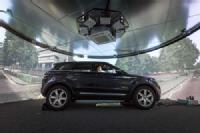 WMG at the University of Warwick have just begun work with a consortium of 11 organisations led by Latent Logic in Oxford on a £2.7 million UK government funded project to create a highly accurate virtual reality simulator environment, including artificial intelligence (AI) trained models of pedestrians and road users, to test connected and autonomous vehicles (CAVs).
WMG at the University of Warwick have just begun work with a consortium of 11 organisations led by Latent Logic in Oxford on a £2.7 million UK government funded project to create a highly accurate virtual reality simulator environment, including artificial intelligence (AI) trained models of pedestrians and road users, to test connected and autonomous vehicles (CAVs).
OmniCAV, which was awarded funding as part of a competition run by the Centre for Connected and Autonomous Vehicles (CCAV) and Innovate UK, will be fed by highly detailed scans of real roads, traffic camera data, accident data and near-miss analyses. These inputs will be used to create a high-fidelity model of real-world roads, which will be populated with realistic artificial intelligence (AI) based road users. This model will used to create an extensive open-access library of VR simulator scenarios to test connected and autonomous vehicles.
OmniCAV will lay the foundations for the development of a comprehensive, robust and secure simulator, aimed at providing a certification tool for CAVs that can be used by regulatory and accreditation bodies, insurers and manufacturers to accelerate the safe development of CAVs.”

